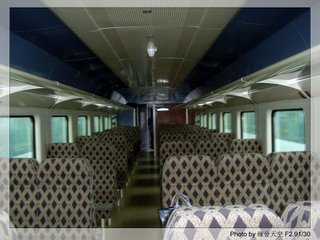Railway to Tibet (Xizang) is Put on Operation
The highest railway in the world starts from Xining, capital of Qinghai Province, ends at Lhasa, the Tibet (Xizang) Province. The total length is 1,956km, of which the 814km from Xining to Golmud was finished in 1979. The construction of 1142km from Golmud to Lhasa was started in 2001.
According to the Chinese government's plan, three more railroad branches will be built. The branches, which will connect Lhasa, the capital of Tibet Autonomous Region, and three other Tibetan cities – Nyingchi, Shiagatse (xigaze) and Yadong, will be completed in 10 years.
Passenger trains will start from Beijing, Shanghai, Guangzhou (Capital of Guangdong province), Chengdu (capital of Sichuan Province), Chongqing and Xining cities.
A free trade zone, which will be the largest in southwest China, will be built in Yadong. Yadong is one of the major border towns in Tibet, and 460 kilometers southwest of Lhasa, or 300 kilometers from Bhutan's capital city, Thimbu, or 600 kilometers from Dacca, capital of Bangladesh.
The train from Beijing will pass through Shijiazhuang, Xi'an, Lanzhou, Xining, Golmud and Nagqu Township. The 4,064-kilometer trip will take 47 hours and 28 minutes from Beijing to Lhasa, 32 minutes less than the return trip.
The 3,360-kilometer trip from Chengdu to Lhasa will take 48 hours and 10 minutes and pass through Guangyuan and Baoji and then link to Lanzhou, Xining, Golmud and Nagqu Township.
The 3,654-kilometer trip from Chongqing will take 47 hours and eight minutes.
The 2,188-kilometer journey from Lanzhou to Lhasa will take 29 hours and 45 minutes.
The trip from Xining in Qinghai Province to Lhasa, which covers 1,972 kilometers, will be 26 hours and 23 minutes.
There are three kinds of tickets available, tickets for basic coachs(or called a hard seats), tickets for hard sleeper bunk beds and tickets for a shared compartments or soft sleepers. The prices for these three kinds of tickets are : (US$1 = 8 yuan)
From Beijing, 389 yuan, 813 yuan and 1,262 yuan respectively.
from Chengdu, 331 yuan, 712 yuan and 1,104 yuan.
From Chongqing, 355 yuan, 754 yuan and 1,168 yuan.
From Lanzhou, 242 yuan, 552 yuan and 854 yuan.
From Xining, 226 yuan, 523 yuan and 810 yuan.
The following are some facts about the Qinghai-Tibet Railway:
* It is the world's highest railway. Some 960 kilometers of its tracks are located 4,000 meters above sea level and the highest point is 5,072 meters, at least 200 meters higher than the Peruvian railway in the Andes, which was formerly the world's most elevated track.
* It is the world's longest plateau railroad, extending 1,956 kilometers from Qinghai's provincial capital Xining to Lhasa in Tibet. The newly completed Golmud-Lhasa section zigzags 1,142 kilometers across the Kunlun and Tanggula mountain ranges.
* About 550 kilometers of the tracks run on frozen earth, the longest in any of the world's plateau railways.
* Tanggula Railway Station, 5,068 meters above sea level, is the highest railway station in the world.
* Fenghuoshan Tunnel, 4,905 meters above sea level, is the world's most elevated tunnel on frozen earth.
* Kunlun Mountain Tunnel, running 1,686 meters, is the world's longest plateau tunnel built on frozen earth.
* Upon its completion, the maximum train speed is designed to reach 100 kilometers per hour in the frozen earth areas and 120 kilometers per hour on non-frozen earth.
* Construction of the Golmud-Lhasa section of the landmark railway commenced on June 29, 2001 and test runs were set for July 2005.

The railroad from Gomud to Lhasa

The passenger train used on the railroad to Lhasa

Oxygen generator on the train

Toilet room on the train


Hard sleeper bunk beds

Shared compartment or soft sleeper

Tibetan Chinese happily patrols on the railroad
Labels: China, Economy, Infrastructure, technology

